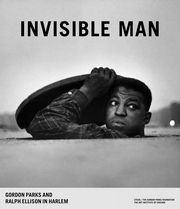| RECENT POSTS DATE 11/30/2025 DATE 11/27/2025 DATE 11/24/2025 DATE 11/22/2025 DATE 11/20/2025 DATE 11/18/2025 DATE 11/17/2025 DATE 11/15/2025 DATE 11/15/2025 DATE 11/14/2025 DATE 11/13/2025 DATE 11/13/2025 DATE 11/13/2025
| | | CORY REYNOLDS | DATE 5/20/2016Opening this weekend at the Art Institute of Chicago, Invisible Man: Gordon Parks and Ralph Ellison in Harlem reunites for the first time two little-known collaborations between the renowned photographer and writer which aimed to make the black experience visible in postwar America. Their 1948 photo essay, "Harlem Is Nowhere," produced for ’48: The Magazine of the Year was lost, and only a fragment of their 1952 “A Man Becomes Invisible” was published in Life. See video below.
The book and exhibition bring together for the first time the surviving photographs and texts intended for the two projects, including never-before-seen photographs by Parks from the collections of the Art Institute and the Gordon Parks Foundation and unpublished manuscripts by Ellison. Revealed in these frank depictions of Harlem is Ellison and Parks’ symbiotic insistence on making race a larger, universal issue, finding an alternative, productive means of representing African American life, and importantly, staking a claim for the black individual within—rather than separate from—the breadth of American culture.
 Steidl/The Gordon Parks Foundation/The Art Institute of Chicago
Clth, 9.75 x 11.5 in. / 128 pgs / 79 b&w.
| |
|